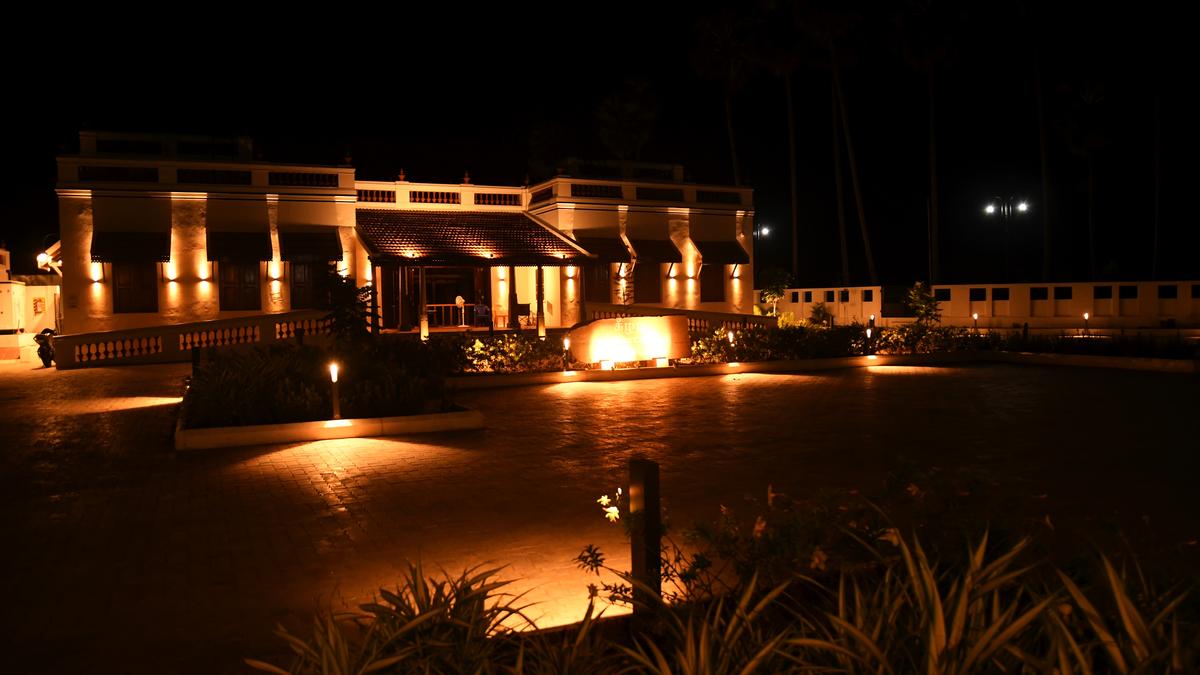The Archaeological Survey of India (ASI) has once again drawn public scrutiny following the controversial transfer of archaeologist K. Amarnath Ramakrishna. His leadership of the Keeladi excavation in Tamil Nadu garnered considerable public and academic interest in the history of ancient Tamil civilisation.
The Keeladi excavations
Started in 2014, the excavation at Keeladi uncovered around 7,500 artefacts. The findings indicated the presence of a sophisticated, literate, and secular urban society and offered crucial evidence in bridging the historical gap between the Iron Age (12th-6th Century BCE) and the Early Historic Period (6th-4th Century BCE). Scholars have since referred to the site as part of the Vaigai Valley Civilisation. The Keeladi settlement could be a part of the second urbanisation that swept the Indian subcontinent between the 6th and 2nd centuries BCE.
Keeladi findings report: Stalin slams BJP
Keeladi findings report: Stalin slams BJP
| Video Credit:
The Hindu
The project took a dramatic turn when Mr. Ramakrishna was abruptly transferred to Assam in 2017. His transfer was widely perceived as an effort to downplay the findings. Tensions escalated when the ASI claimed there were no significant findings and halted the third phase of excavation. This sparked a political rift between the Tamil Nadu government and the Union government. The Madras High Court intervened, transferring the site to the Tamil Nadu State Department of Archaeology, which has since unearthed over 18,000 artefacts.
In 2021, Mr. Ramakrishna returned to Tamil Nadu as superintending archaeologist of the Chennai circle. In 2023, he submitted a report on the first two phases, substantiating the earlier findings. However, the ASI requested a revision of the report. Defending his conclusions, Mr. Ramakrishna cited methodological rigour, stratigraphic sequencing, material culture analysis, and Accelerator Mass Spectrometry dating of the carbonaceous material retrieved from various event horizons within the excavated sites. The episodes underscore the politics in archaeological practice and reflect a credibility crisis facing the ASI.
Centre Vs TN: The fight over Keeladi civilisation findings
Two years after archaeologist Amarnath Ramakrishna submitted his report on the ancient civilisation found in Keeladi, near Madurai, a fresh controversy has erupted. The Archaeological Survey of India (ASI) is demanding he revise his report. Ramakrishna has refused. And now, this disagreement has sparked a political clash between the Centre and Tamil Nadu. Tamil Nadu’s Minister for Archaeology, Thangam Thennarasu, has even accused the Modi government of being desirous of treating Tamils as second-class citizens. So, what’s going on here?
| Video Credit:
The Hindu
An inconsistent approach
The Union government justified its stance saying a single set of findings cannot substantiate alternative historical narratives without broader scientific validation. While this rationale champions methodological rigour and scientific inquiry in knowledge production, it also exposes the inconsistency in the ASI’s conduct across other excavation projects.
Excavations at the Adichanallur and Sivagalai sites in the Thoothukudi district of Tamil Nadu exhibited a pattern similar to Keeladi. Although Adichanallur was excavated in the early 20th century by a British archaeologist, Alexander Rea, the site was neglected for nearly a century. When excavations resumed under the leadership of T. Sathyamurthy of ASI in 2004, notable Iron Age artefacts were uncovered, dated to be more than 3,000 years old. However, it took more than 15 years and court intervention for the ASI to publish the findings.
However, the ASI’s excavation in Rajasthan assumed a different trajectory. The unearthing of an ancient 23 m-deep paleochannel in Bahaj village prompted some historians and archaeologists to associate the site with the mythical Saraswati River mentioned in the Rig Veda. The excavation report also claimed links to human settlements from the ‘Mahabharata period’, a controversial time interval debated by scholars. Such uncritical embrace of mytho-historical narratives stands antithetical to the principles of scientific knowledge production.
The ASI’s conduct in these instances reveals a trap of methodological nationalism — a framework privileging a singular, state-sanctioned vision of India’s past. This approach is often legitimised through methodological rigidity, teleological interpretations, and the construction of a monopolised epistemic regime. The institution’s pursuit of portraying India as a civilisational monolith has long drawn criticism from scholarly circles. Ashish Avikunthak (2021) highlighted arbitrary transfers, delayed promotions, exasperating work conditions, and inadequate infrastructure that stifle quality work in the ASI. Supriya Verma and Jaya Menon (2003) critiqued the Ayodhya excavation project for lacking scientific integrity. Jürgen Neuß (2012) and Dilip Kumar Chakrabarti (1988, 2003) pointed to the ASI’s continued reliance on the outdated Wheeler method and the lack of comprehensive research designs as impediments to holistic interpretation.
The ASI has largely retained a closed internal review system. Most research is circulated through internal reports, institutional monographs, and bulletins. In contrast, its global counterparts such as the Deutsches Archäologisches Institut in Germany, the Institut National de Recherches Archéologiques Préventives in France, and Japan’s Agency for Cultural Affairs regularly publish findings in academic platforms. This fosters transparency, methodological accountability, scholarly rigour, and enhance the accessibility of archaeological findings. It also invites global scholarly engagement.
Beyond these issues, the ASI’s epistemic endeavour is increasingly subsumed by nationalistic fervour. The crumbling legitimacy of archaeological enterprise calls for comprehensive structural and institutional reforms, greater methodological and scientific rigour, financial autonomy, and a robust epistemic framework that embraces the plurality of India’s historical past.
Swarati Sabhapandit, Research scholar; C.P. Rajendran, Adjunct Professor at the National Institute of Advanced Sciences, Bengaluru
Published – August 25, 2025 02:06 am IST
